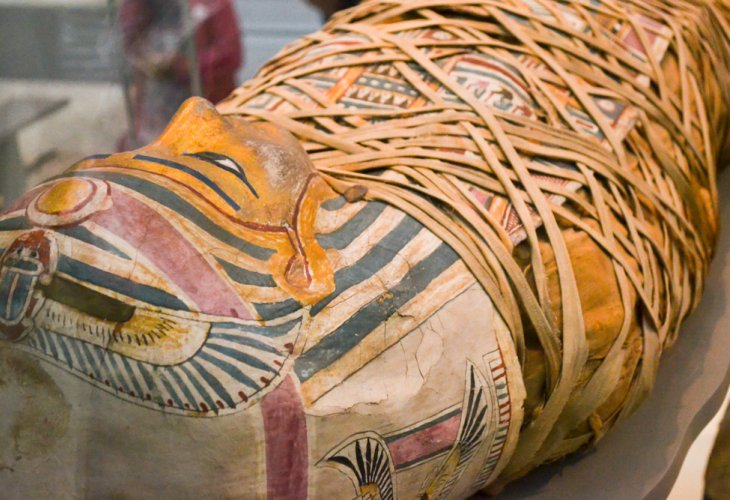Unveiling the Secrets of Pharaoh Amenhotep: A 3,000-Year-Old Mystery
For the first time in 3,000 years, the mummy of Pharaoh Amenhotep - possibly the ruler during the Exodus - has been analyzed using CT scans.
 (Photo illustration: Shutterstock)
(Photo illustration: Shutterstock)Over the past 200 years, numerous mummies of pharaohs from ancient Egypt have been uncovered. Researchers have opened all of them to study the Egyptian kings, their burial methods, and more.
However, one mummy remained untouched - that of Pharaoh Amenhotep I. Archaeologists were unable to unseal this mummy because it was perfectly wrapped in a way that included decorations of flower garlands and a special, face-like mask covering its head and neck, adorned with colorful stones.
Recently, Egyptian scientists used 3D CT mapping to examine the mummy and its internal components. This morning, a paper detailing the findings was published in the scientific journal Frontiers in Medicine.
Who was Pharaoh Amenhotep? Some researchers speculate he might have been the Pharaoh reigning during the Exodus. Regardless, it is known that under Amenhotep's rule, Egypt flourished with large construction projects and military expeditions towards Libya and northern Sudan.
Amenhotep's mummy was discovered in 1881, along with other pharaonic mummies, at the archaeological site of Deir el-Bahri in southern Egypt. Interestingly, these pharaohs were mummified twice; the first time in the 11th century BCE, about 400 years after Amenhotep's initial mummification. Researchers inferred this from deciphered hieroglyphs describing how during Egypt's 21st dynasty, several royal mummies from earlier dynasties were restored and reburied to repair damage due to grave robbers.
Professor Sahar Saleem from the Faculty of Medicine at Cairo University, who serves as a radiologist on the Egyptian Mummy Project, stated in the paper that the fact Amenhotep's mummy remained unopened for nearly 3,000 years allowed researchers to study both his initial mummification and burial, as well as the subsequent re-mummification.
Researchers found Amenhotep was about 35 years old at the time of his death, stood approximately 1.69 meters tall, had healthy teeth, and had undergone circumcision. They also noted his facial resemblance to his father.
According to the researchers, they found no signs of injury or illness that could hint at Amenhotep's cause of death. In contrast, they identified damage post-mortem, possibly inflicted by antiquities thieves. Amenhotep's brain and heart remained in his body, although his other organs were removed by the first embalmers.
Amenhotep's mummy is one of over 40 royal mummies studied by Professor Saleem and Dr. Zahi Hawass. Twenty-two of them were transferred last year to a new museum in Cairo.

